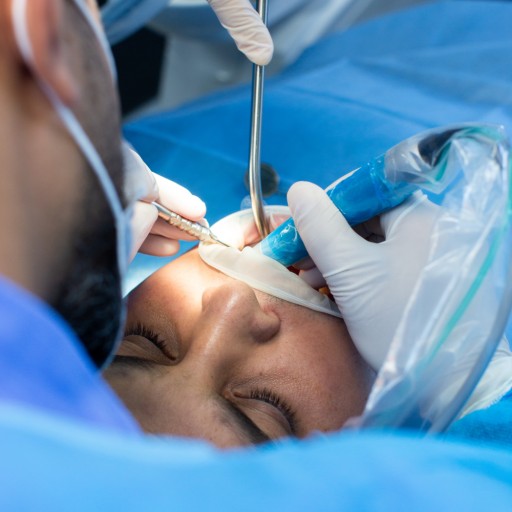Gingivectomy
1 results foundUnderstanding Gingivectomy: A Comprehensive Guide
Gingivectomy is one of the surgeries in dental practice wherein excess gum tissue is removed. This normally becomes recommended either in cases of periodontal disease or when there is excess gum tissue that may lead to oral health or aesthetic issues. We are going to look at the purpose, benefits, procedure, recovery, and aftercare of gingivectomy in this article.
What is Gingivectomy?
Gingivectomy is done to remove unhealthy or excessively grown gum tissue by surgery. It will be helpful in restoring health, improving hygiene within the mouth, and enhancing the look of the smile. The surgery can be performed by a periodontist or by a general dentist who has experience in gum surgery. It may be performed under local anesthesia and is usually considered when other, less invasive treatments have failed.
Why is Gingivectomy Necessary?
A number of conditions may warrant a gingivectomy, including:
Periodontal Disease
Gingivectomy is among the most frequent dental procedures used in the treatment of periodontal disease, an infection of the gingiva. The advanced disease may form small bags between the teeth and gum, which can harbor bacteria and enable further tissue damage. In eliminating infected tissue, these bags are removed, thereby allowing more effective cleaning and healing.
Gum Overgrowth
Conditions like pregnancy, hormonal shifts, or drugs may result in the overgrowth of gums. This condition is referred to as gingival hyperplasia. Gingivectomy will help restore the contour of the gums back to a more normal presentation. This will greatly improve function and aesthetics.
Aesthetic Improvements
Some people have gingivectomy for cosmetic reasons. More gum tissue can lead to a "gummy smile" where gums cover a big portion of the teeth. A gingivectomy may provide a more balanced smile by reshaping the gum line.
The Gingivectomy Procedure
The gingivectomy procedure generally follows these phases:
Consultation and Planning
Before the surgery, the dentist will do an oral health checkup. X-rays are taken pre-operative to assess the structure of the bone and the disease of the gums. There is a discussion of any medical history, medication, and other concerns with regards to the patient between the dentist and the person.
Anesthesia
On the day of the surgery, the area will be numbed with local anesthesia to make the process comfortable. Sedation can also be used on anxious patients.
Tissue Removal
Then he will remove the excess tissue with the help of special surgical instruments. The goal is to achieve a healthier outline of the gum while losing as little healthy tissue as possible. It may take anything from 30 to 60 minutes depending on the extent of surgery.
Suturing
After the gum tissue has been removed, the dentist may place stitches to help the gums heal properly. Most of these stitches are resorbable and will not require removal.
Healing After Gingivectomy
Healing after gingivectomy is usually associated with some discomfort and compliance with special care instructions:
Initial Healing Phase
After the procedure, one can experience swelling and mild discomfort. Your dentist may recommend some over-the-counter pain relievers or prescribe specific drugs to manage the pain.
Dietary Changes
A soft diet for the first few days following surgery will not further irritate your surgical site. Foods such as yogurt, mashed potatoes, and smoothies are good options. For now, avoid hot, spicy or crunchy foods until you have recovered enough.
Dental Hygiene
Good oral hygiene is going to be crucial with regards to your recovery. You will have certain instructions regarding gentle mouth washing and brushing for protecting the healing tissue.
Possible Risks and Complications
Gingivectomy is, for the most part, a safe procedure. However, like any surgical procedure, there are potential risks associated:
Infection: Infection may occur at the site of surgery. Thus, post-operative care must be followed as instructed to minimize the possibility.
Bleeding: Bleeding is quite normal immediately after surgery. However, if excessive bleeding occurs, this must be addressed with your dentist.
Sensitivity: Sometimes when gum tissue has been removed, sensitivity may be felt in the teeth afterward.
Recurrence: Sometimes, the gum tissues can regenerate on their own, and re-treatment may be required in such situations.
Benefits of Gingivectomy
The following are some of the advantages of gingivectomy:
Oral Health Enhancement
As the diseased tissues are taken out, gingivectomy decreases the risk of further periodontal problems and leads to healthier gingiva.
Cosmetically Attractive
In cases where there is excess gum tissue, gingivectomy provides a more harmonious smile and, thus allows or enables the development of better self-esteem and confidence levels.
Ease with Oral Hygiene
With less gum tissue to clean around, patients often find it easier to maintain good oral hygiene, reducing the occurrence of plaque buildup and further gum disease.
Aftercare Tips
Aftercare is a proper road to complete recovery. Consider the following tips:
Follow-Up Visits: Attend any follow-up appointments for complete assurance of proper healing and addressing any concerns.
Avoid Tobacco: Smoking interferes with your recovery process and could add to some complications, hence, is better avoided during the recovery period.
Hydration: Maintain plenty of fluids in your body but try to avoid liquids through straws, since the suction could dislodge the tissues from the site
Gentle oral cleaning: discuss gentle oral cleaning techniques with your dentist in order not to further irritate the surgical site during your oral hygiene routine.
Conclusion
Gingivectomy is, therefore, done to enhance the health of the gums and the aesthetic appeal and hygiene of the oral cavity. Periodontal disease, overgrowth of gum tissue, or any other cosmetic aspect may be greatly improved in function and esthetics through gingivectomy. If you feel that you may be a candidate for gingivectomy, make an appointment with a licensed dental professional, and discuss your options while having a comprehensive examination to formulate a treatment plan tailored for you. Your healthy gums and confident smile depend on proper choices and professional help.

